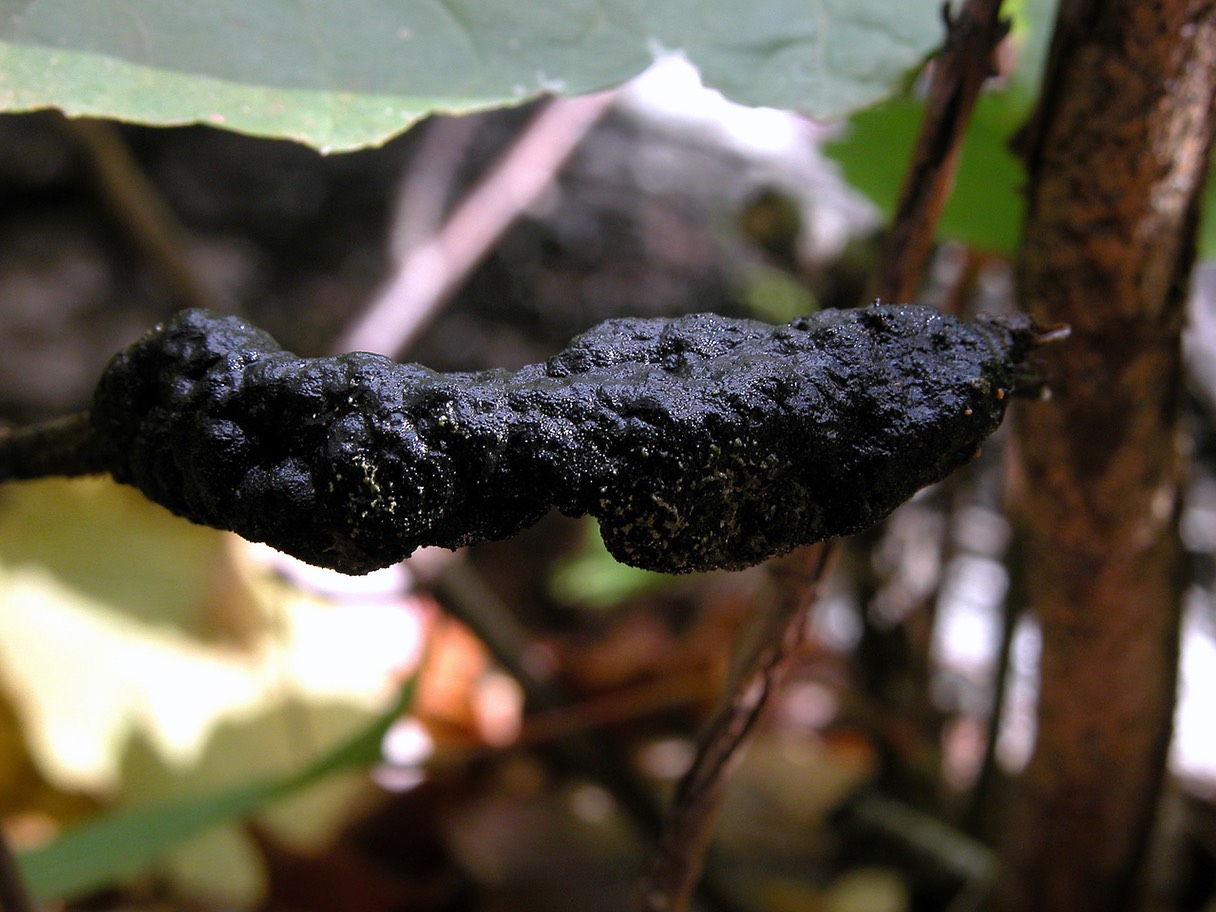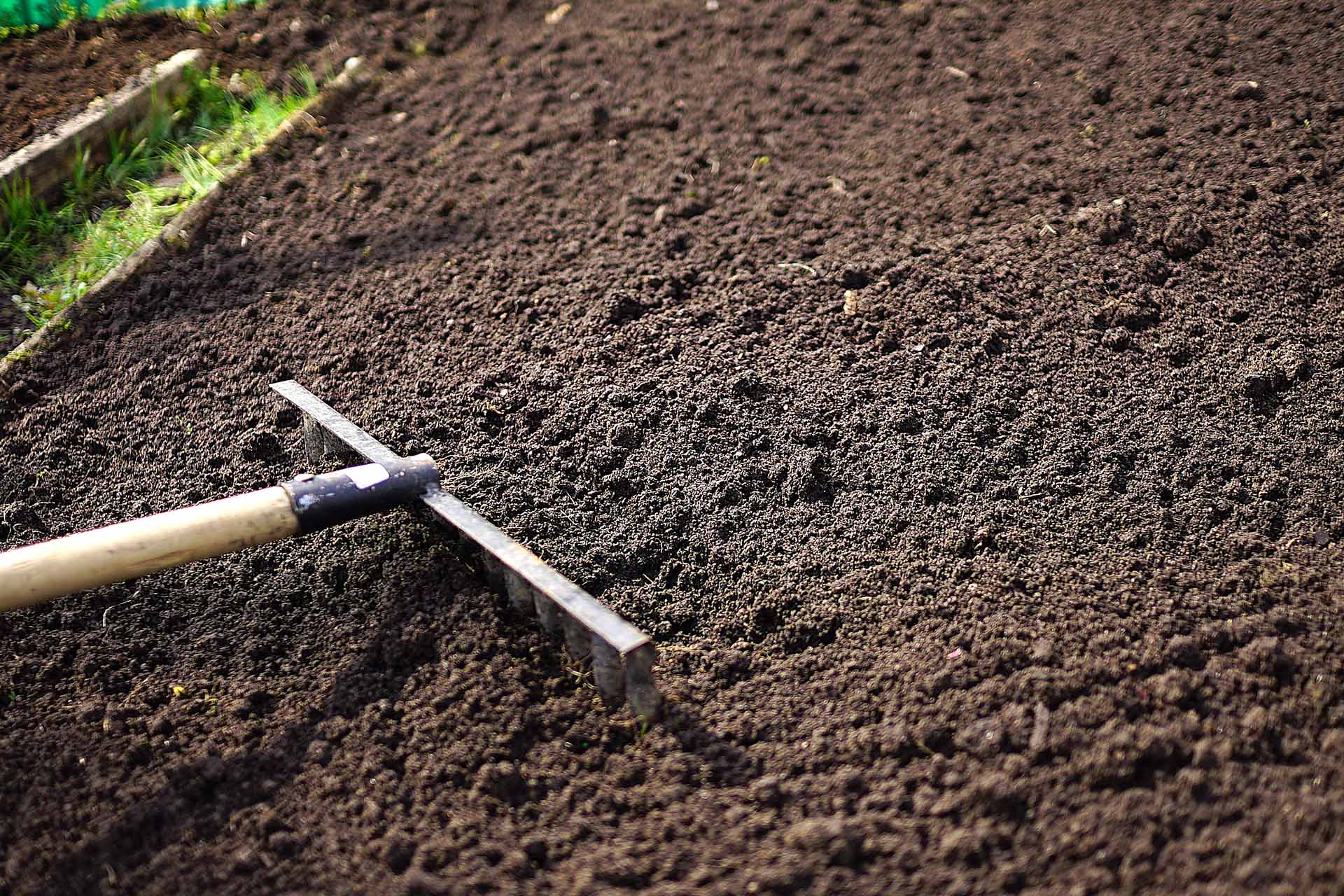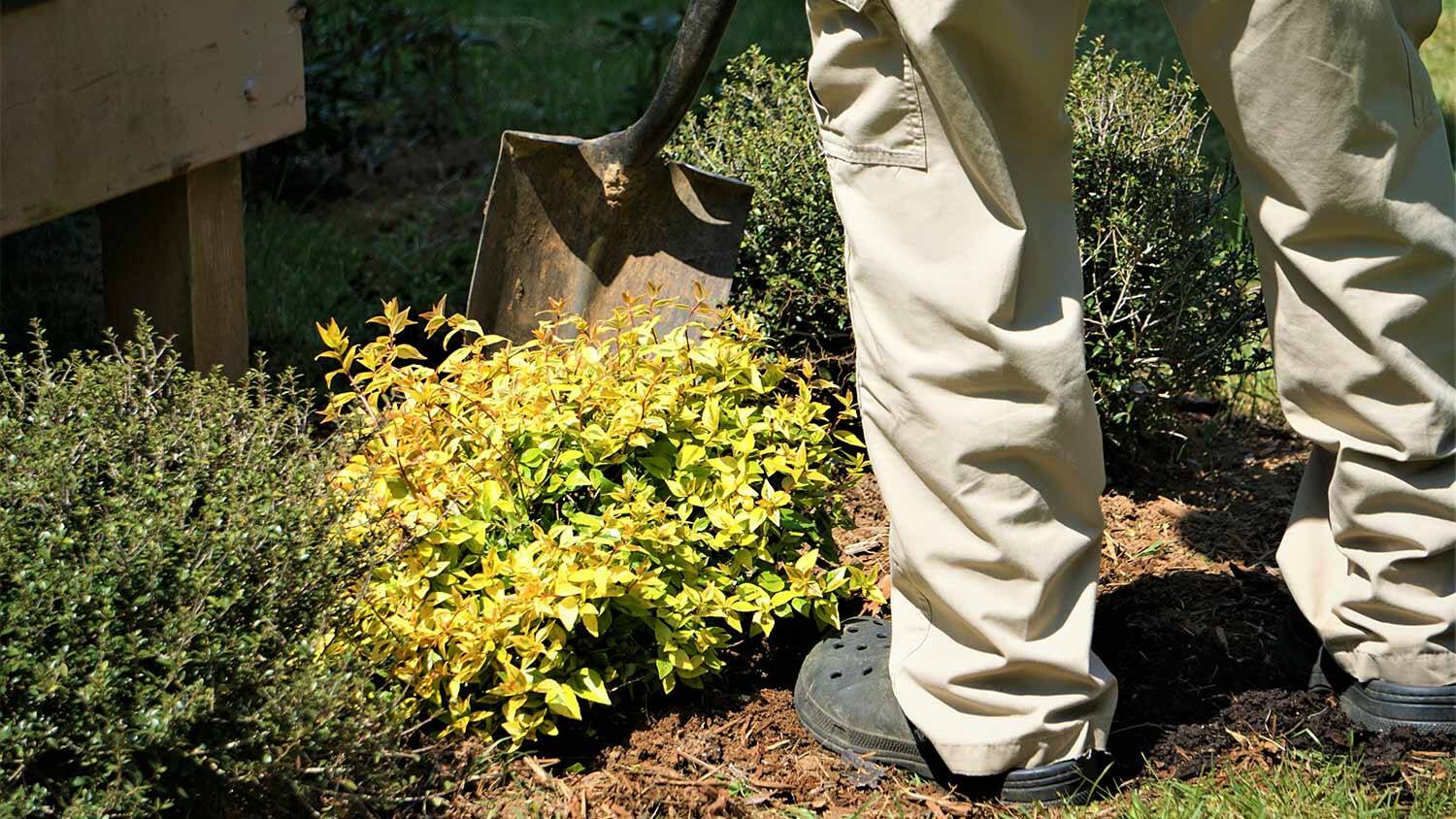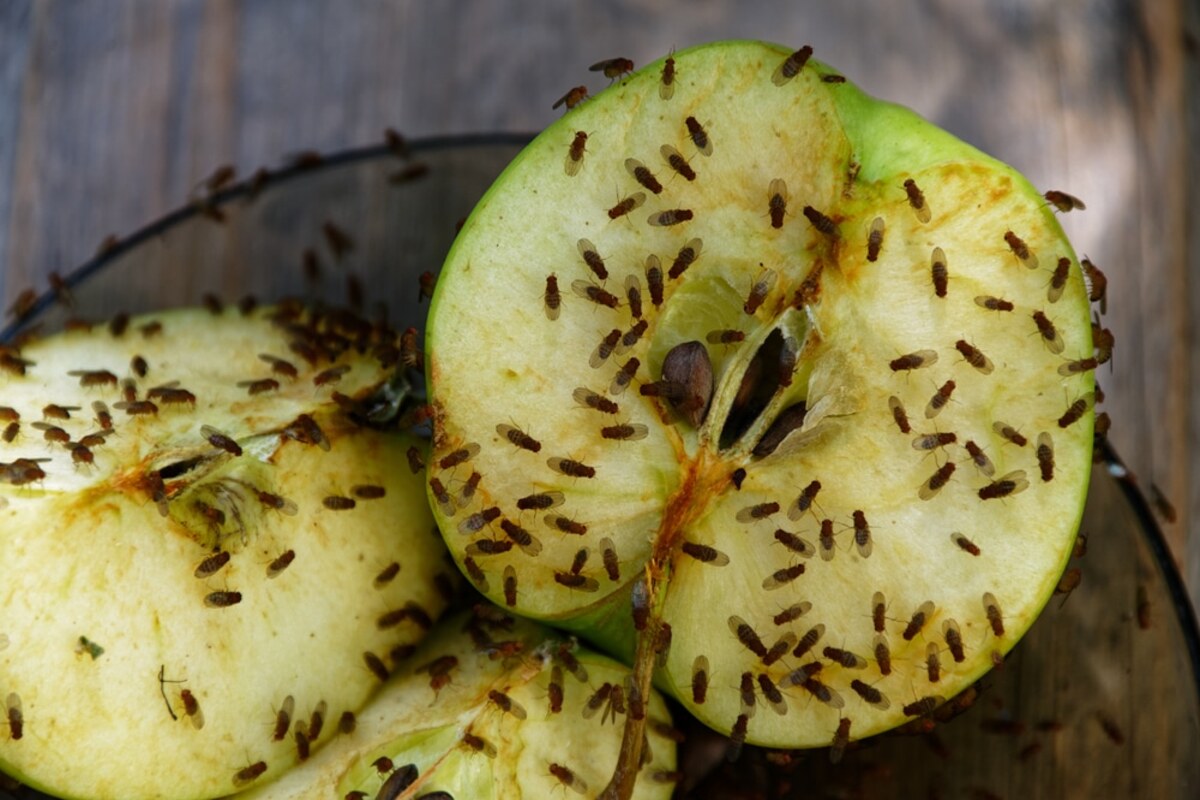Home>Gardening Tips and Tricks>Problem Solving>How To Get Rid Of Lichen On Trees
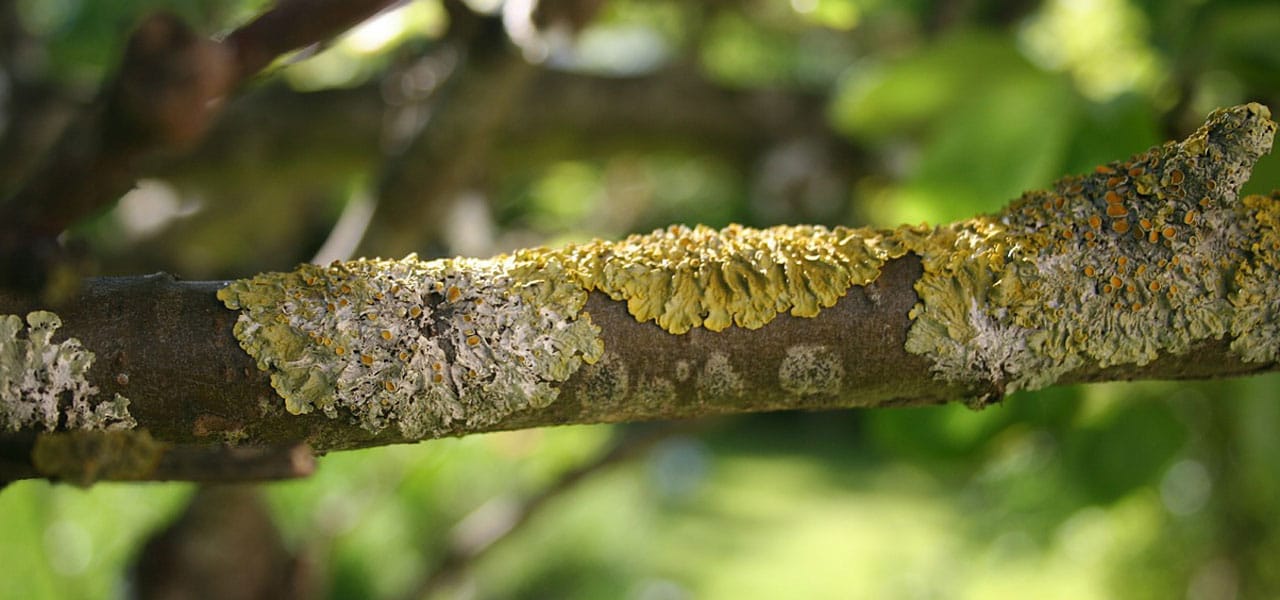

Problem Solving
How To Get Rid Of Lichen On Trees
Published: November 12, 2023
Discover effective ways to solve the problem of lichen on trees with our comprehensive guide. Learn how to get rid of lichen and restore the health of your trees.
(Many of the links in this article redirect to a specific reviewed product. Your purchase of these products through affiliate links helps to generate commission for Chicagolandgardening.com, at no extra cost. Learn more)
Table of Contents
Introduction
Welcome to our comprehensive guide on how to get rid of lichen on trees. Lichen may appear as harmless green or gray patches on the bark or branches of your trees, but it can actually indicate an underlying issue that needs to be addressed. In this article, we will explore what lichen is, the causes behind its growth, and the various methods you can employ to remove it effectively.
Lichen is a unique organism that consists of a symbiotic relationship between algae and fungi. It thrives in damp and cool environments, making trees an ideal host. While lichen itself is not necessarily harmful to the trees, its presence can signify other problems such as low light levels, poor air circulation, or even tree decline. Therefore, it is essential to address any lichen growth and take appropriate measures to ensure the health and vitality of your trees.
In the following sections, we will delve into the causes of lichen growth, how to assess the extent of lichen damage, and both non-chemical and chemical methods to remove lichen from your trees. We will also provide insights and strategies for preventing lichen re-growth.
It is important to note that lichen removal should be performed with care and consideration for the well-being of your trees. Always take the necessary precautions and consult with a professional arborist if you have any doubts or concerns.
Now, let’s dive in and learn how to effectively rid your trees of lichen and promote their overall health.
Understanding Lichen
Lichen is a unique organism that often captures our attention due to its distinctive appearance. However, many people are unaware of what lichen actually is and how it functions. Understanding the basic characteristics and biology of lichen is crucial before delving into methods of removal.
Lichen is not a single organism, but rather a complex relationship between two different organisms: fungus and algae or cyanobacteria. The fungus provides the structure and protection, while the algae or cyanobacteria provide the energy through photosynthesis.
Lichen can take on various shapes and colors, including green, gray, yellow, or even orange. It can be found growing on tree bark, rocks, soil, and other surfaces. Despite its plant-like appearance, lichen is not a plant and does not have roots or leaves. It is classified as a fungus, but it is unique because of its symbiotic relationship with algae or cyanobacteria.
The presence of lichen on tree bark or branches does not necessarily indicate an unhealthy tree. In fact, many healthy trees naturally host lichen without any negative effects. However, excessive lichen growth can be an indication of underlying issues. Factors such as low light levels, poor air circulation, and environmental pollution can contribute to lichen proliferation.
Lichen is incredibly resilient and can survive in extreme conditions, such as deserts and freezing temperatures. This adaptability allows lichen to colonize various environments and play important ecological roles. It helps to break down rocks and other organic materials, contributing to soil formation. Lichen also provides food and shelter for insects and small animals.
It is important to differentiate between lichen and other plant diseases or pests that can harm trees. Lichen does not directly harm the trees themselves, but it can indicate potential issues that require attention. Therefore, removing lichen should be done with a focus on improving tree health rather than solely eliminating the lichen.
Now that we have a better understanding of what lichen is and its role in the ecosystem, let us move on to exploring the causes behind its growth and how to assess its impact on trees.
Causes of Lichen on Trees
The growth of lichen on trees can be attributed to several underlying causes. While lichen itself does not harm trees, its presence can indicate certain environmental conditions or tree health issues that need to be addressed. By understanding the causes of lichen growth, you can take appropriate measures to mitigate its presence and improve the overall health of your trees.
1. Low light levels: Lichen thrives in areas with reduced light intensity. Trees growing in shaded or partially shaded areas are more susceptible to lichen growth. If your trees are surrounded by taller structures or dense foliage, it can limit the amount of sunlight reaching the branches and create an environment conducive to lichen colonization.
2. Poor air circulation: Trees that are located in areas with stagnant air can experience increased lichen growth. Limited air movement can create a moist and humid microclimate, which lichen prefers. This can occur in tree canopies that are tightly packed together or in areas with low wind movement.
3. Environmental pollution: Lichen is sensitive to air pollution, particularly sulfur dioxide and nitrogen compounds emitted by industrial activities and motor vehicles. High levels of pollution can promote lichen growth, as some species are more tolerant to these pollutants than others. Therefore, the presence of lichen on trees in urban or industrial areas may indicate poor air quality.
4. Tree health issues: Lichen growth can also be an indirect indication of tree health problems. Trees that are stressed or in a weakened state due to factors such as drought, nutrient deficiencies, or disease may become more susceptible to lichen colonization. Lichen can take advantage of the weakened state of the tree and colonize the bark or branches.
It is important to note that lichen growth itself does not directly cause harm to the tree. However, it serves as a visible indicator of potential issues that may be affecting tree health. By addressing these underlying causes, you can create an environment that is less conducive to lichen growth and promote the overall well-being of your trees.
Now that we understand the causes behind lichen growth, let us move on to assessing the extent of lichen damage and determining the appropriate methods for removal.
Assessing Lichen Damage
When dealing with lichen on trees, it is important to assess the extent of the lichen growth and its impact on the tree’s health. Understanding the level of lichen damage will help determine the appropriate course of action for removal and tree care.
1. Quantity of lichen: Evaluate the quantity of lichen present on the tree. A few patches of lichen here and there may not pose a significant problem, especially on healthy trees. However, if the lichen growth is extensive and covers a large portion of the tree’s surface, it may indicate potential issues that need attention.
2. Lichen species: Take note of the specific species of lichen that is present on the tree. Different lichen species have different tolerances and preferences for environmental conditions. Some species are more common and generally harmless, while others may indicate more severe environmental stress or tree decline.
3. Tree vitality: Assess the overall health and vitality of the tree. Lichen growth on an already weakened or declining tree may be a sign of further stress. Look for other signs of tree health issues, such as leaf discoloration, dieback, or pest infestations. Consult with an arborist if you are unsure about the tree’s condition.
4. Structural damage: Examine the tree for any structural damage caused by the lichen. Although unusual, some types of lichen can penetrate the bark and damage the underlying tissues. Look for signs of cracking, splitting, or decay in the affected areas.
5. Environmental factors: Consider the environmental conditions surrounding the tree. Factors such as low light levels, poor air circulation, pollution levels, and drought can contribute to lichen growth. Identifying and addressing these factors will help prevent future lichen colonization.
By carefully assessing the lichen damage, you can determine the appropriate actions to take. If the lichen growth is minimal and the tree is otherwise healthy, no action may be necessary other than monitoring the situation. However, if the lichen growth is extensive or the tree is exhibiting signs of decline, steps need to be taken to improve tree health and remove the lichen.
Now that we have assessed the lichen damage, let us explore both non-chemical and chemical methods for lichen removal.
Non-Chemical Methods for Lichen Removal
When it comes to removing lichen from trees, non-chemical methods are often preferred as they are more environmentally friendly and pose minimal risks to tree health. These methods focus on creating a less favorable environment for lichen growth and physically removing the existing lichen. Here are some non-chemical methods you can employ:
- Improve light and air circulation: Prune surrounding vegetation or nearby structures that may be blocking sunlight or impeding air movement around the tree. Opening up the canopy will help limit moisture accumulation and create an environment less favorable for lichen growth.
- Ensure proper tree care: Maintain proper tree care practices such as regular watering, fertilization, and mulching. Healthy and well-maintained trees are more resilient against lichen colonization.
- Mechanical removal: Gently scrub the affected areas using a soft brush or sponge. Avoid using harsh abrasive materials that can damage the bark. Be careful not to injure the tree during the process.
- Power washing: In some cases, power washing can be effective in removing lichen from tree surfaces. However, it should be done with caution and at low pressure to avoid damaging the tree’s bark or underlying tissues.
- Promote natural predators: Encourage the presence of natural predators, such as birds or insects, that feed on lichen. Providing bird feeders or creating insect-friendly habitats can help control lichen growth.
It is important to remember that removing lichen should be done with care to avoid causing further harm to the tree. If you are unsure about the appropriate techniques or if the lichen growth is extensive, it is recommended to seek professional advice from an arborist.
Now that we have explored the non-chemical methods for lichen removal, let’s move on to discuss the chemical methods that can be used.
Chemical Methods for Lichen Removal
In some cases, non-chemical methods may not be sufficient for removing stubborn lichen growth. In such situations, chemical methods can be employed to aid in the removal process. It is important to exercise caution when using chemical solutions and to follow the instructions carefully to ensure the safety of both the tree and the surrounding environment. Here are some chemical methods for lichen removal:
- Borate-based products: Borate-based products, such as borax or borate salts, can be effective in killing lichen without causing harm to the tree. These products can be applied as a spray directly onto the affected areas. Follow the manufacturer’s instructions for proper dilution and application.
- Copper-based products: Copper-based fungicides can be used to control lichen growth. These products are typically available in liquid or powder form and can be applied to the affected areas using a sprayer. Follow the manufacturer’s instructions for proper application rates and safety precautions.
- Algaecides: Algaecides specifically designed for lichen control can be an option for removal. These products target the algal component of lichen, effectively eliminating its presence. Again, it is crucial to carefully follow the instructions provided by the manufacturer.
- Professional treatments: For severe or persistent cases of lichen growth, it might be necessary to enlist the help of a certified arborist or tree care professional. These experts have access to specialized products and equipment that can effectively address the lichen problem while minimizing the risk to the tree’s health.
It is important to note that chemical methods should be used as a last resort and only when non-chemical methods have proven ineffective. Additionally, it is essential to consider the potential environmental impact of chemical treatments and to choose products that are specifically labeled for use on trees.
Before using any chemical solution, it is wise to consult with an arborist or tree care professional who can provide guidance and expertise in selecting the most appropriate treatment option for your specific situation.
Now that we have explored both non-chemical and chemical methods for lichen removal, let’s discuss some preventive measures to keep lichen from re-growing on trees.
Preventing Lichen Re-growth
After successfully removing lichen from your trees, it is important to take preventive measures to minimize the likelihood of lichen re-growth. By addressing the underlying factors that contribute to lichen colonization, you can create an environment that is less favorable for its growth. Here are some preventive measures to consider:
- Improve tree health: Follow proper tree care practices, including regular watering, fertilization, and pruning. Healthy and well-maintained trees are less susceptible to lichen colonization.
- Promote air circulation: Thin out the canopy and remove any dense vegetation or structures that obstruct air movement around the tree. This will help reduce moisture buildup and create a less suitable environment for lichen growth.
- Manage light exposure: Trim surrounding trees or vegetation that may be shading the affected tree. Allowing sufficient sunlight to reach the branches will discourage lichen colonization.
- Reduce pollution: Minimize pollution sources in the vicinity of the trees. This includes avoiding the use of harsh chemicals, reducing vehicle emissions, and creating awareness about pollution control measures.
- Maintain proper tree spacing: When planting new trees, ensure adequate spacing between them to allow for proper air circulation and light penetration. Crowded conditions can create a favorable environment for lichen growth.
- Regular tree inspections: Conduct regular inspections of your trees to monitor for any signs of lichen re-growth or other tree health issues. Early detection and prompt action can prevent lichen colonization from becoming a significant problem.
- Professional arborist consultation: If you are unsure about the specific measures to take or if the lichen growth persists, consult with a certified arborist. They can provide expert guidance and recommend tailored strategies for preventing lichen re-growth.
By implementing these preventive measures, you can create an environment that discourages lichen growth and promotes the overall health and vitality of your trees.
Now that we have explored ways to prevent lichen re-growth, let’s summarize the key points covered in this article.
Conclusion
Dealing with lichen on trees requires a comprehensive approach that considers the underlying causes, assessment of damage, and appropriate removal methods. Lichen itself is not harmful to trees, but its presence can be an indication of environmental factors or tree health issues that need attention.
By understanding the causes of lichen growth, such as low light levels, poor air circulation, pollution, and tree health problems, you can take proactive measures to create a less favorable environment for lichen colonization. Non-chemical methods, such as improving light and air circulation, gentle mechanical removal, and promoting natural predators, can be effective in removing lichen while minimizing the risk to tree health.
In cases where non-chemical methods are not sufficient, cautious use of chemical treatments can provide effective results. Borate-based products, copper-based fungicides, and algaecides can be used with care, following manufacturer instructions and considering the potential environmental impact. Seeking professional advice from certified arborists may be necessary for severe or persistent cases of lichen growth.
Once lichen has been successfully removed, preventive measures such as maintaining tree health, promoting air circulation, managing light exposure, reducing pollution, and regular inspections can help prevent lichen re-growth.
Remember, removing lichen should always be done with care to minimize damage to the tree and the surrounding environment. If in doubt, consult a professional arborist for advice specific to your situation.
By following these guidelines and taking proper care of your trees, you can ensure their long-term health and minimize the chances of lichen becoming a significant issue.
